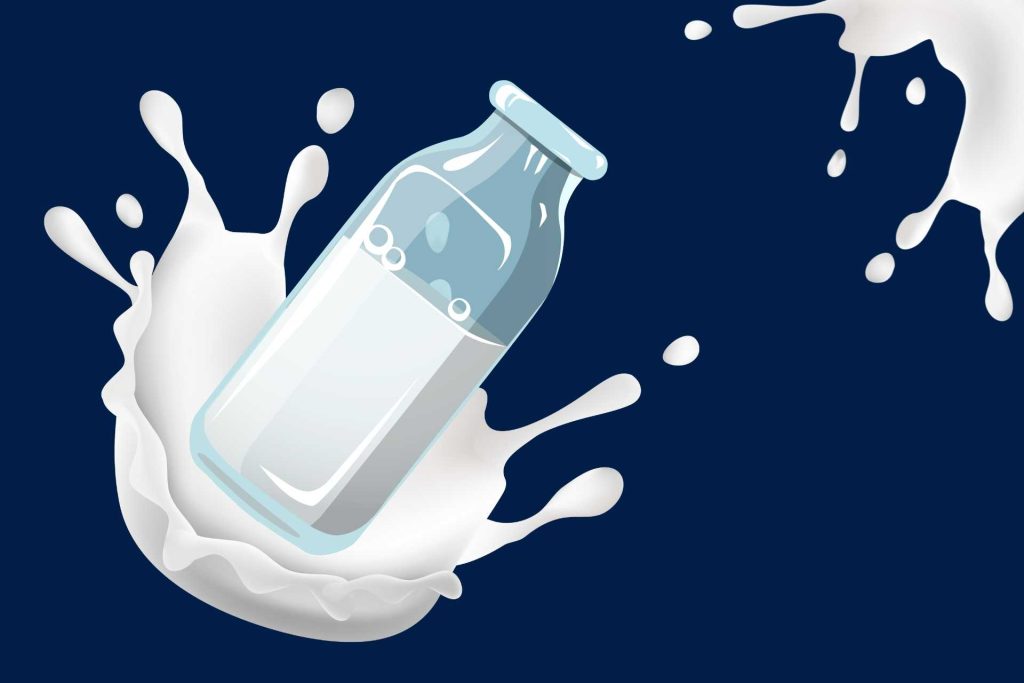The dairy industry presents many unique challenges to food and beverage manufacturers. Milk, cheese and butter might seem simple to the consumer, but the manufacturing process behind these products is quite complex.
As a professional in the food industry, you know that your organization’s operation depends on exacting science and nuanced procedures. To ensure compliance with safety standards, satisfy customers with excellent offerings, and maintain organized financials with a solid bottom line, your organization must run a dairy well. In reality, solving your most demanding problems requires more than just technical expertise. Technologies can significantly help overcome several of the most daunting challenges. This post will look at five challenges dairy-processing companies face and how Acumatica ERP software can help you overcome them.
1. Assessing a component breakdown quickly and accurately
When analyzing raw milk at your cheese-making facilities, you need to know the percentages of butterfat, protein, solids, and other components in each batch. Using an automated milk analyzer will help you achieve these results more efficiently.
Correctly classifying milk is essential for compliance. Milk must be classified as soon as it arrives at the dairy, and records for each class must be created in the software interface. This can be a challenge since most dairies place all their incoming milk into the lowest category until they have time to account for its components properly.
Acumatica ERP systems are designed to help dairy businesses like yours streamline the assessment of received raw milk by integrating with intelligent devices dedicated to the procedure, allowing for real-time data capture and automated updates on the platform. This gives you complete visibility and confidence in the figures gathered.
Additionally, the class-adder functions of purpose-built solutions allow you to quickly revise the classes of your milk once you have determined their breakdown and purpose. Doing so will allow you to satisfy regulations and have an exact idea of what you have on hand.
2. Managing Materials with Varying Expiration Dates
Every shipment of milk comes with an expiration date and a “use by” date. It is essential to record and associate it with each product you make from that batch of milk. If you don’t, you risk wasting what you bought by not using it in time or delivering spoiled products to your clients.
Because many types of non-milk dairy products are made from different processes than liquid milk products, their expiration dates do not necessarily apply to all varieties. Acumatica ERP solutions can automatically link the expiration date of raw milk to the products made from that raw milk, thus ensuring total traceability down the supply chain.
Advanced dairy ERP solutions like Acumatica ERP also utilize best practices, including first-in, first-out (FIFO) protocols that help keep materials from expiring before they can be used. This both helps to ensure healthy margins and contributes to more sustainable operations.
3. Maintaining a high-quality level in a variety of end products
Dairies make a variety of products, from whole milk to premium cheeses. Consumers have differing opinions about what constitutes a good product in each case, but ensuring that all necessary checks are performed can be complicated when the definition of a good product differs from one item to another.
A consistent colour, texture, and shape are essential for consumers to evaluate whether something on the shelf is worth buying. A human inspector cannot be relied upon to examine everything that comes off the line, so a more efficient and exacting approach must be taken to ensure quality.
ERP for the dairy industry allows you to connect directly with intelligent sensors and scales, automating all necessary readings, measurements, and evaluations. You can customize the data collected depending on the nature of the product in question, ensuring relevant aspects are evaluated.
The system automatically flags items outside your predetermined acceptable ranges, allowing you to intervene and remove inadequate items. Through this process of identifying and eliminating errors, you can improve your processes over time.
4. Accounting for Complex Costing Situations
Dairy organizations are sometimes limited in accessing accurate pricing information at the beginning of the month, as government regulations determine costs only after the month has ended.
In a perfect world, the most effective way to resolve this discrepancy would be to make a difference with other business transactions. However, some businesses cannot keep track of the distinction this way. Some companies rely on spreadsheets, which are also imperfect because multiple versions and errors in data input can muddle the numbers.
Dairy ERP software integrates all departments and provides access to financial information for all departments, enabling you to track the change between your original estimates and final prices. This way, everyone will be able to account for price variances at the end of each fiscal period, ensuring that everything adds up.
5. Changing to plant-based alternatives can disrupt supply chains.
A growing number of consumers are exercising their purchasing power to choose plant-based and lab-made dairy products over traditional milk, cheese, ice cream and other dairy foods. Consumers are increasingly spending more money on plant-based meat alternatives, so the profitability of your lines could suffer if vegans and vegetarians take a large enough share of the market. Dairy products recipe management tools in enterprise resource planning systems enable your research and development team to fine-tune their formulas while expanding into new territory. They will be able to experiment with new plant-based and lab-made lines that appeal to consumers who gravitate toward such items. ERP platforms are packed with features that allow you to analyze financial data and determine which products are working best—and which might need to be changed in response to shifting customer preferences.
When choosing a provider, do your research and feel confident.
You can expect holistic improvements in your dairy business with Acumatica ERP solutions. However, as with most expert services, you should do your homework to find a solution that best meets your specific needs.
At Tayana Solutions, we have worked with food and beverage companies for decades, helping them develop industry-specific systems with best practices at their core. Our Food & Beverage ERP is the product of our expertise and pioneering technology, offering unparalleled capabilities in more ways than one.

Sangeetha brings 20 years of experience in Information Technology which includes Solution architecting, building micro services, research, and evaluation of business applications, integrating apps.

